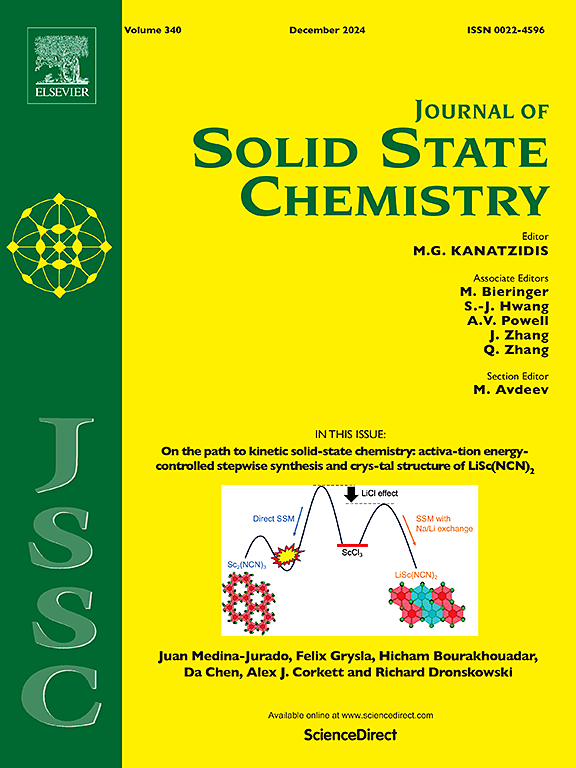Supramolecular crystalline material based on uranyl(V) and γ-cyclodextrin formed by photoreduction and irradiation reduction
IF 3.2
3区 化学
Q2 CHEMISTRY, INORGANIC & NUCLEAR
引用次数: 0
Abstract
Actinide supramolecular materials exhibit unique electronic properties and functions, offering great opportunities for application. However, the uranyl(V) based crystalline materials are reported scarcely due to the instability of uranyl(V). Herein, we report on the preparation and structural characterization of supramolecular crystalline materials composed of uranyl, γ-cyclodextrin (γ-CD) and Cs+ for the first time. The experimental results show that uranyl is activated in an asymmetric four-coordination microstructure with strong ligand to metal charge transfer (LMCT) in the prepared crystalline. Simulated calculation reveals that the crystalline has a high surface charge density of 0.15 C/m2, which benefits the conversion of uranyl(VI) to uranyl(V). Subsequently, photoreduction and γ-irradiation reduction are explored to achieve efficient reduction from uranyl(VI) to uranyl(V), yielding reduction ratios of 73 % and 88 %, respectively. In the obtained supramolecular crystalline, the uranyl(V) in majority can coexist stably with minor uranyl(VI) in γ-CD environment because of restricted coordination. After reduction, the bandgap of crystalline is decreased from 2.85 to 1.92 eV due to the stronger LMCT effect. Furthermore, the characteristic g-factors of uranyl(V) at 2.005 and 2.020 suggest the existence of magnetism of the crystalline at room temperature.

求助全文
约1分钟内获得全文
求助全文
来源期刊

Journal of Solid State Chemistry
化学-无机化学与核化学
CiteScore
6.00
自引率
9.10%
发文量
848
审稿时长
25 days
期刊介绍:
Covering major developments in the field of solid state chemistry and related areas such as ceramics and amorphous materials, the Journal of Solid State Chemistry features studies of chemical, structural, thermodynamic, electronic, magnetic, and optical properties and processes in solids.
 求助内容:
求助内容: 应助结果提醒方式:
应助结果提醒方式:


